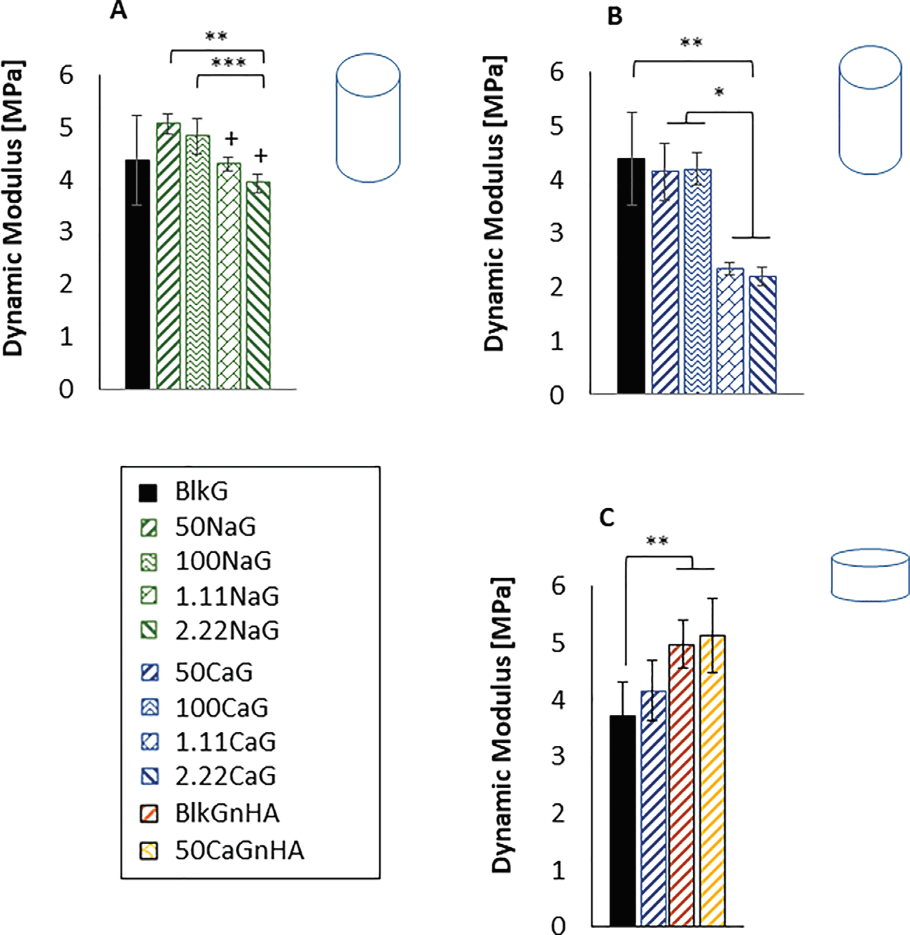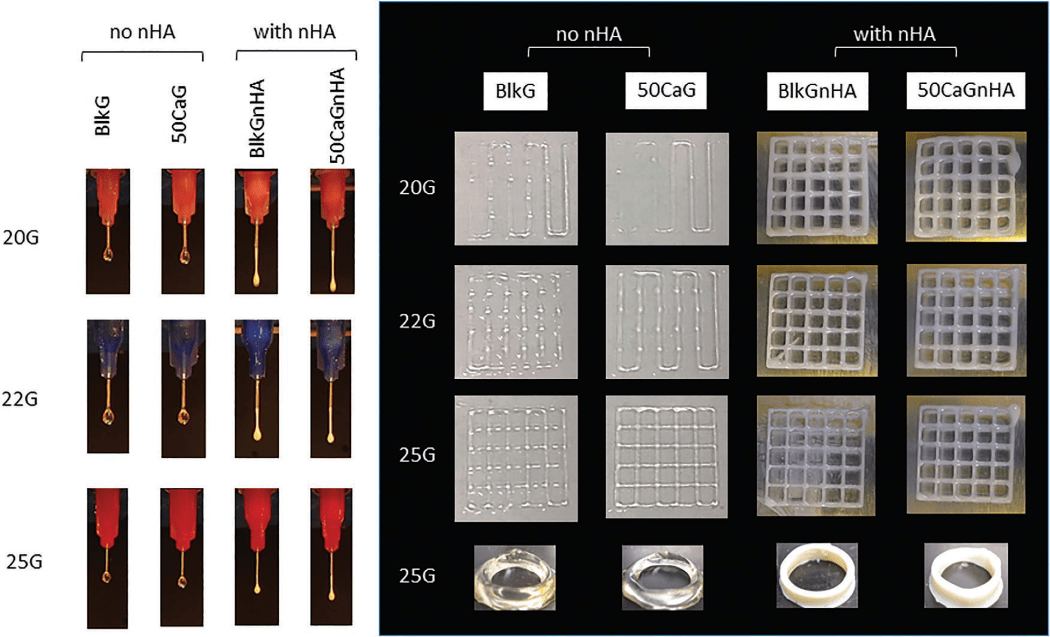3D bioprinting has significantly gained popularity in recent years as a mean to create custom structural scaffolds that are hierarchical and biologically functional. Optimizing the bioink involves targeting characteristics such as viscosity, crosslinking capabilities, stability under physiological conditions (pH, temperature etc.) and resistance to proteolytic degradation. In this study, Dr. Patricia Comeau and Dr. Thomas Willett from the University of Waterloo varied the levels of chloride salts (NaCl and CaCl2) and hydroxyapatite nano-particles (nHA) in methacrylated gelatin (GelMA), a common organic matrix in bioink due to its inherent bioactivity and the ability to have their physiochemical properties easily tailored. These neutral salts were selected based on hypotheses that CaCl2 would increase viscosity and improve photo-polymerization of the solution, while NaCl would have a lesser impact due to the limited bonding interactions it has as a monovalent ion. The inclusion of nHA acts as a reinforcing mineral particle phase within the protein matrix, working to enhance the mechanical properties of the gel.
The paper analyzes viscosity and UV curing of GelMA-based solutions and inks, their swelling in MilliQ distilled water, and dynamic mechanical analysis of the cast hydrogel specimens. The CellScale UniVert was used in a cyclic sinusoidal loading mode between 0 and 8% compressive strain at a frequency of 0.01Hz to determine the dynamic modulus, storage modulus and loss modulus of the hydrogels. Graphs below show dynamic modulus of GelMA-based hydrogels with varying concentrations of Ca2+, Na+, and nHA included.

Dr Willett and team have achieved in this paper 3D printed hydrogels with dynamic modulus matching that of articular cartilage. This was a first for a GelMA-based composite system.
Read the full journal article here: https://doi.org/10.1002/mame.201900142
Read about Dr Willett’s and Dr Comeau’s research here: https://uwaterloo.ca/waterloo-composite-biomaterial-systems-lab/
To read about a bioink blend for rotary 3D bioprinting of vascular constructs, click here.








